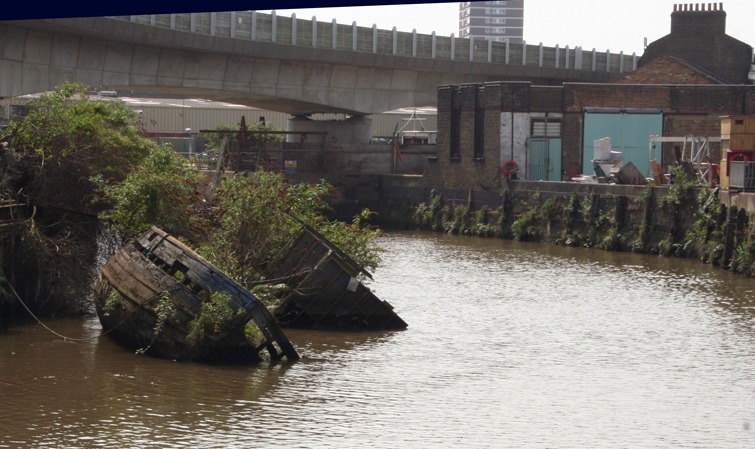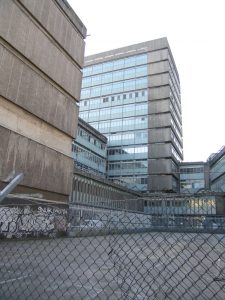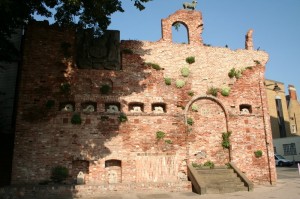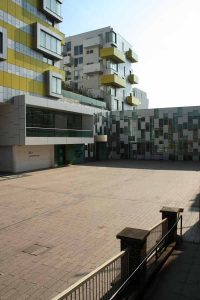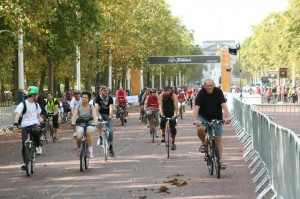I wish I could tell you whether this rotting barge is a ‘wreck awaiting removal’ or a ‘scheduled monument awaiting a viewing fee’. I fear the former. Deptford Creek is a very interesting place. Henry VIII established England’s first Royal Dockyard here. Peter Romanov, son of Alexis I, was born in the Kremlin and came to Deptford in 1698 to learn shipbuilding. This was 4 years before he became the Czar who became Peter the Great. An exceedingly strong man, he worked, drank and womanized with the shipwrights. From 1871 until 1914 Deptford was the City Corporation’s Foreign Cattle Market. But almost all the evidence of this fascinating history has gone. The Docklands Light Railway was as heartlessly perched over the river as if it been in Tokyo. Then, with the 1990s YBA’s and Britart, Deptford became an artist’s enclave. Most certainly, the old ships should not be removed. But nor should they be restored. They should be allowed to sink, ever so gradually, into the mud.
Category Archives: London urban design
Trafalgar Square as a garden
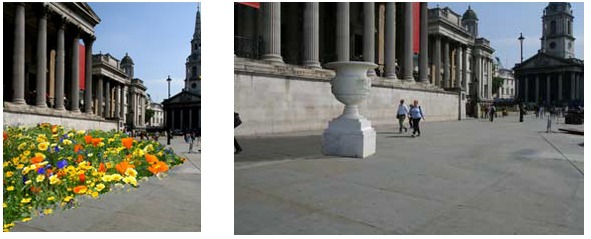
Charles Barry’s design for Trafalgar Square was inspired by the gardens he had seen in Italy and designed in England (including Shrubland Park and Trentham Gardens). In essence, Barry followed Repton’s theory that an important building, like the National Gallery, should be fronted by a terrace. The original idea for a Square in this position had come from from Humphry Repton’s partner (John Nash). A traffic island for 150 years, the Square was rescued by Normal Foster’s part-pedistrianization scheme of 2003. The point Fostor neglected is that garden squares should have flowers.
My suggestion is to grow the flowers in pots and arrange them on the great sandstone slabs in front of the National Gallery. When the space is required for another purpose, the pots can be moved.
If the authorities won’t permit a radical transformation, perhaps they would allow a Classical Vase to stand in front of the National Gallery.
Barking Town Square's elder brother
This photo (taken near Waterloo East Station in South London) helps make the point that the ‘urban design theory’ underpinning the misguided design of Barking Town Square dates from the 1960s. It was wrong then and it is wrong now. Muf Architecture’s office is in East London but they could well have been inspired by Waterloo. Note the chain link fencing. Why not plant it with convolvulus? – the Rasta temple in Camberwell could let us regard this as a context-sentsitive approach! Or, better, plant it with runner beans – nice red flowers and then some good organic food to eat.
Public Art in Barking Town Square
Nothwithstanding our criticism of the urban design of Barking Town Square, Muf deserve an award for an excellent piece of public art on the northeast side of the Square. Muf state that ‘The folly screens the flank wall of Iceland supermarket and makes the fourth elevation to the town square. The folly is comprised of architectural salvage and recovers the texture of lost historic fabric of the town centre; it stands as a mementomori to this current cycle of regeneration.’
Unlike the usual ‘Turd in the Plaza’ approach to public art, this wall:
(1) serves an urban design objective by enclosing the space
(2) picks up on the historic context of Barking
(3) pleases the eye without being attention-seeking
I wish we could have more context-sensitive public art.
Barking Town Square does not deserve a public open space award
I’d never been to Barking. But in 2008 Barking Town Square won the the 5th European Prize for Urban Public Space so I went to have a look. Sorry about the weak pun, but the judges are Barking Mad. The main building has a sentimental Bauhaus-ey charm but the urban space is a plain rectangle of pink Spanish granite, laid in stretcher bond for no good reason. The hoardings illustrate some planting to come but the “Public Open Space” is a void, an empty space, a nothing. The judges all represent organizations which promote the art of architecture, which is fair enough, because the building is OK, but this is NOT a good urban square. It is as though Jane Jacobs and William H Whyte had never lived. There is no mixed use: the adjoining buildings are all municipal, without the shops and cafes which might have provided users. There is nowhere to sit, ignoring wisdom of Jan Ghel. The ‘square’ is almost a cul-de-sac, ignoring Ed Bacon and Bill Hillier. The paving is non-SUDS. The only redeeming feature is a piece of public art described as a “7 metre high folly [which] recreates a fragment of the imaginary lost past of Barking”. But why re-create an imaginary lost past? Barking had a medieval abbey. Captain Cook was married in a Barking church. Then there is the cultural context. Barking has one of the largest immigrant communities in London, with many from the Punjab and Sub-Saharan Africa – neither of which region is known to admire the Bauhaus. Some architects show genius in urban design. Muf muffed it.
Note: The photograph was taken at about 11.30 am on an unseasonably warm autumn day (28th September 2008). The good urban spaces in London were overflowing with people. The places which remind one of pre-1989 East Berlin were empty.
London's Olympic cycling routes
Doubtless, the 2012 athletes will be provided with excellent tracks. But will the cycle paths used to reach the Olympic path be of a decent standard? Maybe.
London had a ‘Cycle to Work Week’ c1974 and I decided to take part. Since then, I have been a regular London cyclist. It felt like pioneering to begin with but cycle usage in the capital has been increasing steadily. Official policy on cycling has also changed and now appears to be as follows:
- Appoint platoons of cycle planning officers to commission regiments of consultants on cycle planning.
- Include cyclist-friendly policies in local plans (UDPs)
- Proliferate signs to mark the London Cycle Network (LCN)
- Paint any unwanted patches of roadspace green and call them cycle routes
- Ignore routes which are popular with cyclists
- Spend as little money as possible on cycle routes
- Use traffic calming devices, known as chicanes, to kill and maim as many cyclists as possible.
- Introduce bendy busses, described as ‘public transport’, to mop up survirors and make London safe, once again, for vehicles powered by the infernal combustion engine.
So, on the whole, I am lack optimism about the legacy of the London Olympics including a single high-quality cycle route. There are only two reasons for optimism: London’s Mayor (Boris Johnson) and the present leader of the Tory Party (David Cameron) are both keen cyclists. But so was a former Minister of Transport (Sir George Younger) and he managed to achieve nothing of value.
In order to make cycle routes useful and beautiful, cycle route planning and design should be taken out of the hands of transport engineers. The job should be done by landscape architects – but only those who are themselves cyclists.

